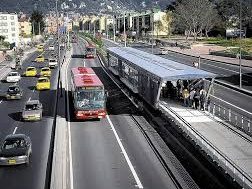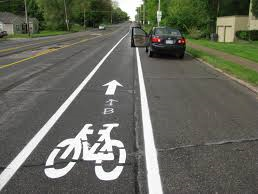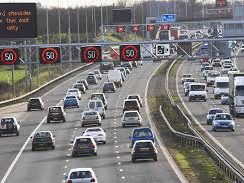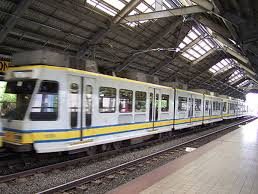Transport
The status of physical transportation infrastructure has already been outlined in Subsection 1.4 of this report. As a consequence of the inadequate rail transport facilities in Chhattisgarh, road transport occupies an important place for the transport of goods and people within the state. Till the end of March 2010 the total number of registered vehicles in the state of Chhattisgarh, which was 2.4 million subsequently has increased substantially registering a total growth of 13.59 percent. Category wise growth includes 20.82 percent for cars and light vehicles, the highest for any vehicular segment. In 2010-11,revenue collections from duty and taxes on motor vehicles, etc., was 426.74 crore and 351.85 crore in 2009-10, an approximate growth of 21.28 percent. For 2011-12 till September 2011, the revenue collections were Rs. 220.57 crore and in for the same period in the previous year 184.90 crores.
In undivided Madhya Pradesh, till 31.12.2002 only means of public transportation available was the Madhya Pradesh State Road Transport Corporation (MPSRTC) under the Department of Transportation. After the formation of Chhattisgarh, the corporation was dissolved and the transport sector has been privatized. This resulted in an increase in the state and inter-state transport, and new reciprocal agreements were entered into with neighbouring states.
Priorities
The State’s key priorities are in the development of national and state highways. Industrial investments will come only if good quality infrastructure and connectivity is ensured. Difficult topography of many areas and the heavy industrial traffic put a constraint on construction as well as maintenance. In road projects where viability gap is of more than 40 percent, mechanisms will be devised for gap funding from internal resources, rather than going for a Built-Operate-Transfer BOT model. With Chhattisgarh’s commitment to accelerate the pace of development, 12thPlan will be the time to rollout a coordinated strategy to improve the quality of road infrastructure. A specialized agency will be created to provide end-to-end solutions for improving roads right from their conceptualization, clearances, financing, execution, and maintenance. Thrust will also be on linking industrial areas with nearest railhead and national highways through state roads of quality standards.
Key Issues
Some of the key issues in the sector include:
- Increasing congestion, especially in urban agglomerations; increasing air pollution from vehicular emissions;
- Very little public transport facilities especially in urban areas; what exists is largely out-dated vehicle fleets;
- High forest cover prevents improving road connectivity; and
- LWE and security issues lead to escalated development and maintenance costs that go well beyond the funds allotted by national programmes; also, maintenance of highways and roads in LWE affected areas are an issue; many of these are in poor repair.
As indicated in the earlier section on Urban Development, a BRTS is under implementation in Naya Raipur under World Bank Support as a demonstration city for World Bank’s Sustainable Urban Transport Project. A LRTS also proposed. Likewise, the State has engaged DMRC to conduct a pre-feasibility study of the Metro Rail project in the State. The State is forming an UMTA to facilitate and support efforts to realize mass rapid transport solutions for Greater Raipur.
The State Transport Department is undertaking a various measures in the sector. For example, the process for issuing smart cards for vehicle registration and driver licensing is in the final stage. The plan for implementing the Central Government initiative/ directive for high security plates for all vehicles is nearly finalised. There is a proposal to establish check posts and computerised weighbridges at the state borders – in Patkohera, Kamharpali and Dhanwar .The task of checking vehicles by the various departments -- the Transportation, Commerce, Forests, etc. would be done at the same location, and this convergence would facilitate smoother inter-state transport/vehicle movement.
Substantial resources, including loans, have been galvanized to bridge this infrastructure gap, take road connectivity to all habitations, and compensate for the poor rail network. Priority was placed on first reaching the hitherto unconnected habitations. Between 2001 and early 2011 rural roads measuring 17,668 km and 20,870 bridges/culverts have been constructed. To facilitate smoother inter-State and internal traffic State highways and district roads have also been upgraded. The Public Works Department has paid special attention to the improvement of roads and construction of bridges. In 2010-11 2138 km of roads were constructed and repaired, which included metaling, black top, widening, strengthening, renovation. In addition construction of 54 large bridges, 28 medium sized bridges, has been completed and 117 large and 7 are in progress. In 2011-12, till September 2011, construction and repair of 671 km roads, 19 large and 10 medium bridges as been completed while 188 large bridges are in progress. Also, the Chhattisgarh State Roads Development Project is being implemented with assistance from the ADB. Under the project, 1249 km of state high ways and district roads are being upgraded/repaired .The estimated project cost is 1225 crores. Under the scheme, 18 of the 19 routes have been completed and one is under way. A proposal for a second loan from ADB, of 2500 crores for the work on 1500 km of other important roads is being prepared. Additionally, in 2010-11 three bypass roads -- (1) Ghargoda bypass measuring 6 40 km, (2) Champa by pass measuring 5 km, and (3) Zora Saddu Dhaneli measuring 17.03 km have been completed and 3 roads measuring 34.4 km are under progress last year and this year. Likewise, several railway over bridges have been completed and others are in progress. Also, work on one interstate road of economic significance is in progress.
While there have been no State specific detailed studies on climate change and its relationship to transportation and vice versa, available trends from across the world, show that:
- Overall demand for transport activity (for both passenger and freight) is growing rapidly;
- Transport activity is increasingly motorised (private cars for passenger transport and lorries for freight, almost all of which are propelled by internal combustion engines); and
- Technological improvements such as fuel-efficient vehicles and alternative power sources have not been rapid enough to offset the impacts of this growth.
- These trends translate directly into various costs for the environment, society, and economy.
The transport sector’s consumption of fossil fuels translates into energy-related carbon dioxide (CO2) emissions, which is projected to increase as transportation needs grow, with a direct impact on climate. Additionally, transport-related pollution, noise, and vibration can pose serious threats to human health and wellbeing. Local air pollution is caused by exhaust emissions produced by traffic, mostly in the form of Sulphur Oxides (SOx), Nitrogen Oxides (NOx), Carbon Monoxide (CO), Hydro Carbon (HC), Volatile Organic Compounds (VOC), toxic metals, Lead Particles and Particulate Matter (PM) – including Black Carbon. These emissions represent a large proportion of pollutants, especially in developing cities. Such air pollutants are a cause of cardiovascular/pulmonary and respiratory disease. For example, exposure to lead can cause increased blood pressure, liver and kidney damage, impaired fertility, comas, convulsions, and even death. Children are particularly vulnerable; they can suffer from reductions in IQ and attention span, learning disabilities, hyperactivity, impaired growth and hearing loss.
Road accidents remain a serious public health issue, and many victims tend to be pedestrians, cyclists and motorcyclists, for whom infrastructure provision is often neglected. Climate change is only likely to exacerbate this by impacting available infrastructure assets. Likewise, congestion is caused when the volume of traffic reaches the capacity of infrastructure. It is particularly common in urban areas, where it can severely limit the positive effects of agglomeration. Travel times for public-transport users, as well as pedestrians and cyclists, frequently increase if dedicated infrastructure is not provided. Congestion also increases fuel consumption and the level of pollution, as fuel is still consumed whilst cars are stationary. Again, climate change can exacerbate these impacts, leading to traffic-filled roads that can become physical and psychological barriers that can sever communities and divide entire cities.
Roads, railways, and other transport infrastructure can also have a severe impact on the natural environment, from the removal of vegetation during construction or the subsequent fragmentation of habitats and disturbance of animals; such fragmentation, without proper ecological infrastructure planning can severely disturb wildlife and reduce biodiversity.
As such, in the short to medium term, the State, through appropriate departments/agencies will seek to:
- Improve access to quality public transportation with a focus on bus services and service quality;
- Put into place mechanisms for proper planning and provisioning of infrastructure facilities;
- Improve route and traffic planning, and regulate issue of permits through surveys and scientific data;
- Provide/improve passenger information systems, and remove institutional and regulatory hurdles;
- Undertake capacity building of personnel in the Transport Department and other agencies as required;
- Promote initiatives such as vehicle pooling, etc., especially in cities and towns;
- Rigorously implement measures for vehicular pollution control;
- Promote the use of ensure availability of cleaner fuels such as CNG and bio-fuels; and
- Systematise and ensure uniformity in institutional arrangements for providing public transport services.
This will involve key strategies and steps to (indicatively, but not limited to):
- Promote access instead of mobility. Shift to less harmful modes of transportation and improve vehicles towards lower carbon intensity and pollution.
- Shift to more environmentally efficient modes such as public and non-motorised transport;
- Invest in public transport and infrastructure that promotes walking and cycling generates jobs, improves wellbeing;
- Improve vehicles, vehicle maintenance, and fuels as a priority to reduce urban air pollution and greenhouse gas emissions;
- Ensuring that stricter controls are followed on transport vehicle over-loading so that improved fuel efficiency and reduced road wear result;
- Adopt green transport policies will also reduce road accidents and alleviate poverty by improving access to markets and other essential facilities;
- Develop green-belts and avenue plantation for in-situ urban pollution dispersal;
- Coordination with the Food and Civil Supplies Department to check and eliminate fuel adulteration and enforce strict controls for fuel mixtures;
- In coordination with the Public Works Department and other appropriate agencies, strive to ensure fully paved roads for reducing dust pollution levels;
 Bus Rapid Transit Systems
Bus Rapid Transit Systems Naya Raipur is proposed to develop exclusive Cycling lanes
Naya Raipur is proposed to develop exclusive Cycling lanes Traffic Management
Traffic Management Light Rail Transit Systems
Light Rail Transit Systems
